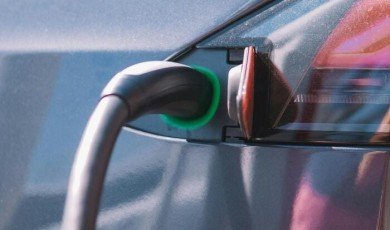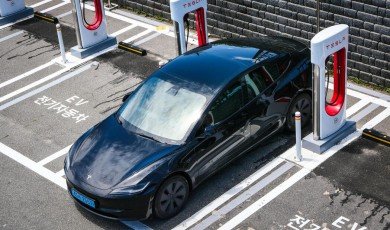Navigating the fast‑changing world of electric vehicles (EVs) is no longer just about battery size or charging speed. Today, drivers want smarter routes, accurate range predictions, and real‑time insights about where and when to plug in. With energy prices fluctuating and public charging networks expanding unevenly, road trips and daily commutes can feel like a puzzle. The missing piece is intelligent, data‑driven support that helps drivers plan confidently instead of guessing their way from charger to charger.
That’s where AI tools change the game for EV owners and businesses alike, turning scattered data into actionable decisions. By analyzing routes, driving behavior, grid conditions, and charger availability, these solutions make electric travel more predictable, cost‑effective, and stress‑free. Below are key ways intelligent technology is reshaping how drivers plan, manage, and enjoy electric journeys.
1. Smarter Route Planning for Real‑World Driving
Traditional navigation apps were built for combustion engines and often underestimate the complexity of electric travel. Intelligent systems take into account elevation changes, weather, traffic patterns, and even driving style to suggest the most efficient route. Instead of simply showing the “fastest” path, they provide an energy‑aware route that reduces unnecessary stops and range anxiety.
These systems can generate multiple options—such as the fastest route, the most energy‑efficient path, or a route with premium charging locations—and allow drivers to choose based on their priorities. Over time, they learn from repeated trips, adjusting estimates based on how a specific driver typically accelerates, brakes, and uses climate control.
2. Hyper‑Accurate Range Predictions
One of the biggest concerns for EV drivers is whether the battery will actually last as long as the dashboard suggests. Intelligent algorithms dramatically improve range predictions by factoring in vehicle model, battery health, historical driving data, terrain, and current conditions like temperature and wind. This approach provides a dynamic, context‑aware range estimate rather than a static number.
Better range prediction helps prevent both under‑utilization of the battery (charging too often “just in case”) and risky overconfidence. The result is a more relaxed driving experience and a higher percentage of usable range on every trip, which translates into real savings over time.
3. Real‑Time Charger Availability and Reliability Insights
Stopping at a charging station only to find it busy, broken, or incompatible is more than an inconvenience—it can disrupt an entire journey. Intelligent solutions analyze live network data, crowdsourced feedback, and historical usage patterns to estimate whether a charger will be available when a driver arrives.
Beyond simple availability, these systems can highlight the most reliable locations based on downtime history and user reviews. Drivers gain visibility into station type, connector standard, charging speed, pricing, and amenities nearby, making it easier to decide where to stop and for how long.
4. Optimized Charging Schedules and Costs
As electricity prices vary by time of day and region, when and where drivers charge can have a major impact on total cost of ownership. Intelligent optimization tools look at local tariffs, smart‑meter data, and grid conditions to suggest the cheapest and most sustainable charging windows.
For home charging, this might mean automatically scheduling overnight sessions during off‑peak hours. For fleet owners, it can involve prioritizing which vehicles to charge first, balancing operational readiness with energy cost. Over months and years, these optimizations add up to significant savings while also reducing pressure on the grid.
5. Personalized Driving Insights and Coaching
Every driver has a unique style, and that style has a measurable impact on energy consumption. Intelligent analytics can translate telematics and in‑vehicle data into clear, practical recommendations. Drivers learn how much range they gain by easing off aggressive acceleration, moderating highway speeds, or adjusting climate settings.
For companies managing multiple vehicles, aggregated insights help identify training opportunities, benchmark performance, and recognize efficient driving behavior. Over time, this feedback loop encourages smoother habits that extend range, reduce wear on components, and make journeys more predictable.
6. Seamless Integration with Charging Networks and Apps
Many EV drivers juggle multiple apps—from navigation to payment to specific charging‑network tools. Intelligent platforms can unify these experiences by integrating mapping, station discovery, reservation systems, and billing. Instead of manually checking several sources, drivers see a single, coherent picture of their options.
This integration is especially powerful for drivers who travel across borders or through regions served by different networks. The system can automatically surface compatible chargers, manage memberships, and streamline payments, turning complex infrastructure into a simple, predictable service.
7. Predictive Maintenance and Battery Health Monitoring
Battery performance is central to electric travel, and unexpected degradation can be costly. Intelligent analytics track charging patterns, temperature exposure, and usage intensity to flag behaviors that might shorten battery life. They can also identify early signs of component issues before they become critical.
By guiding drivers toward healthier charging habits—such as avoiding frequent 100% charges when unnecessary or limiting rapid‑charging sessions—these systems help preserve long‑term capacity. This not only improves reliability on the road but also protects the resale value of the vehicle.
8. Better Planning for Long‑Distance and Cross‑Country Trips
Long‑distance EV journeys demand more planning than short urban commutes. Intelligent trip planners stitch together optimal charging stops based on vehicle range, driver preferences, and desired arrival time. They can dynamically re‑route if conditions change, a charger goes offline, or the driver uses more energy than expected.
By simulating the entire journey before departure and updating it in real time, these tools remove much of the uncertainty that once discouraged drivers from taking extended trips. The result is travel that feels as straightforward as driving a conventional car—without sacrificing the environmental and financial benefits of electrification.
Conclusion: Turning Data into Confident Electric Journeys
As electric vehicles move from niche to mainstream, the expectations placed on drivers, businesses, and infrastructure are rising. Raw data—on chargers, traffic, weather, and energy prices—already exists in huge volumes. The real advantage comes from transforming that data into clear guidance that drivers can trust every day.
Intelligent solutions provide that translation layer, helping people plan routes, control costs, preserve battery health, and avoid unpleasant surprises on the road. For EV owners, fleets, and mobility providers, adopting these capabilities is no longer optional; it is fundamental to delivering reliable, efficient, and enjoyable electric travel. Those who embrace this shift will be best positioned to navigate the rapidly evolving landscape of sustainable transportation.







